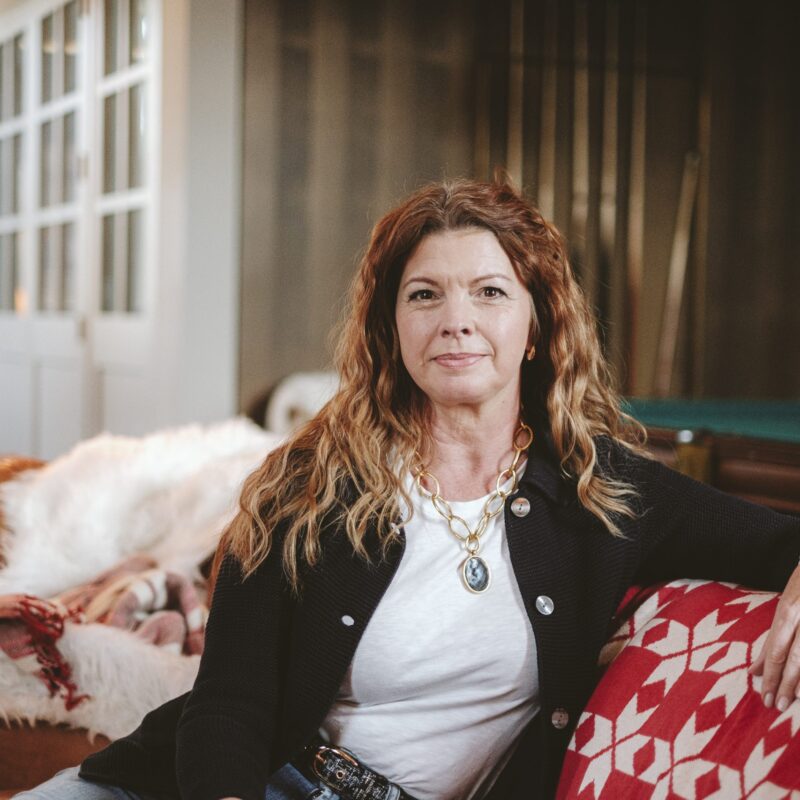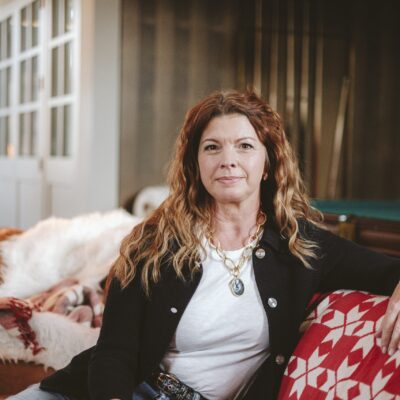October skies
Keep your eyes on the skies this month and you may be lucky enough to stumble upon clouds of migratory monarchs wending their way to Mexico. Like the legendary rain of golden ginkgo leaves in one shimmering fall, I have heard tell but never witnessed this particular phenomenon, though solitary stragglers fueling up on Joe Pye weed are a traditional harbinger of autumn here in the hollow. It is a fact, however, that magical things happen if you keep your eyes open while you’re mooching around outside. Timely chores include fall clean-up, bed amendment and planting bulbs after the first hard frost.
/Webbutterfly.jpg) Monarch butterflies are on the move this month, and gardeners outside doing fall chores may get lucky and glimpse the migration.
|
To get the best selection, shop for bulbs when garden centers first offer them. Deer love tulips, rabbits like crocus, but nothing bothers daffodils, so explore the world of Narcissus, especially the miniature and wild varieties for edging borders and walkways. Later-blooming larger types are useful in the bare spots left among ornamental grasses cut down next March. Do not cut down ornamental grasses when they turn brown. This is their time. Let them sway in the wind, sparkle with frost and shelter birds through winter.
It’s tempting to do a lot of pruning as we neaten the grounds, but you’ll be looking at those stubs all winter on the evergreens, and in the case of early bloomers like azaleas and lilacs, you’ll cut off next spring’s flower buds. Better now to cut back old stalks of bloomed-out perennials like peonies and salvias (leave coneflower and rudbeckia seed-heads for finches and sparrows); fluff up existing mulch (aim for no more than 2-3 inches); and add compost, rotted leaves and other organics to the soil.
Fall is prime time for testing soil because it’s the best season to do something about it. Servants of the lawn should check pH every 3 years, adding lime to keep it around 6.2 – 6.5. Halve recommended amounts and apply twice to give it time to settle as the soil tumbles itself over, freezing and thawing through winter.
The renovation of our old perennial border continues, and the list of low-maintenance, deer-resistant plants has been expanded to include Winterberry (Ilex verticillata) for a low spot. Decked on pale gray branches with vibrant scarlet berries in winter, this native deciduous holly tolerates boggy conditions and combines well with purple Beautyberry. Ferns and Virginia bluebells will embroider the edges next spring.
|
October in the garden
|
As work on the border has progressed, this has become the season of digging mugwort, an invasive, tenacious weed with clotted thick white roots. I think of them as my neuroses as I follow their tendrils through the soil and hack them out as best I can. I sift the little pieces, but there are always some left, where I plan to plant stronger things to crowd them out. When I stretch my back, I look upward, hopefully.
Look up from your own weedy patch occasionally, and keep an eye on the old ginkgo tree between the Rotunda and the Chapel, just in case.
Cathy Clary is a gardening teacher and consultant; she tends ornamental beds and a kitchen and cutting garden at home in a hollow south of Charlottesville. Read more about her at hollowgarden.com, and e-mail her with questions at garden@c-ville.com.
/WebIMG_7723.jpg) Members of Living Energy Farm are training oxen to work their fields—one way they’ll avoid the use of fossil fuels. Photo courtesy of LEF. Members of Living Energy Farm are training oxen to work their fields—one way they’ll avoid the use of fossil fuels. Photo courtesy of LEF. |
Fossil-fuel free
On 127 clear-cut acres in Louisa, the members of Living Energy Farm (LEF) are setting out to build a farm that will run without any use of fossil fuels. They’ve spent nearly the last year cutting a road, building a barn, training oxen and making plans for an educational center that will prove to the world that life without oil is not only possible, but desirable.
Sara Tansey, LEF member, explained that she and other members of the group want to “show [people] that it can be super fulfilling and really comfortable and culturally rich to live without fossil fuels. There’s an element of myth-busting.”
To that end, they’re keeping busy with plans for straw-bale houses, wind and solar power, organic farming and many other aspects of their oil-free utopia. Want to check it out or lend a hand? Attend a Saturday work party. Contact the group through livingenergyfarm.org.—Erika Howsare
Muscadines, jujubes, pawpaws
If you’re interested in growing organic fruit at home, stay away from the blockbusters (apple, cherry, peach, plum). That’s according to a pamphlet, “The Slacker’s Guide to Home Orcharding,” written by local author and orchardist Alexis Zeigler.
The most popular fruits, Zeigler explains, are also the ones that suffer most from disease and insect damage—and therefore end up most heavily sprayed. Less well-known, but just as delicious, are intriguing species like rabbiteye blueberries, autumn olives, che berries, goumis, and passionfruit. And all of these can be more easily grown in our part of the world.
Afton’s Edible Landscaping (ediblelandscaping.com) is one trusted local source for fruit trees and bushes, along with plenty of info on caring for them. Zeigler’s helpful pamphlet is available for free download at his website, www.conev.org. Want to taste these fruits before committing? Some may show up at the farmer’s market. This time of year, look for che berries and pawpaws.—E. H.
/WebStudio_3_D.jpg) Take inspiration from VMDO Architechts next time you plan an event—they know how to party green. Photo courtesy of VMDO.
|
Get together, green
Fall is here, which means a parade of various holiday events is about to begin. This time, can you strive for a no-waste party? I gleaned some tips from VMDO architects, who host a large fall office party every year and pride themselves on being low-waste and locally-focused.
Think reuse, not single-use when it comes to party planning.
First, invitations. Going digital is the obvious greenest option, but VMDO created an invitation/keepsake for guests, making invitations on cards with slots so guests could build card houses.
Do you already have decorations that would work? Can you borrow? Can you scout local consignment shops or Craigslist instead of buying new? Fill vases with recycled paper bouquets or create an art centerpiece that can be taken home by guests. A potted plant would work. Balloons are festive, but so are greener alternatives like recycled-paper streamers. VMDO decided no more flowers from overseas, so they asked everyone to look in their yards and bring flowers, turning it into a flower-arranging bonding affair for the office.
For food, think “100-mile diet” and “farm-fresh produce.” Don’t want to cook yourself? Call Gus and his crew at Harvest Moon Catering, a sustainable and local-minded food operation. They can supply dinnerware and composting with the help of the folks at Timbercreek Organics. Ask guests to BYOF (bring your own flatware), or you can offer finger foods to avoid the need altogether. Reusable linens rather than the single-cloth plastic or vinyl is a greener choice. Want someone else to handle that? Virginia Linens has a sustainability focus in the cleaning of its linens.
One more idea: Can you offer a special party perk for your carpooling guests?
Check out Better World Betty’s local green living resource list at betterworldbetty.org and blog at cvillebetty.blogspot.com.
By the numbers: 31
That’s the number of years that fans of high-quality, handmade goods have thanked their lucky stars for the Crozet Arts & Crafts Festival. This year, it’s happening October 8-9—and it’s a fab way to avoid doing your Christmas shopping in big-box purgatory. Get the deets at crozetartsandcrafts.com.
/WebStonehaus_BLV64.jpg) This Belvedere home by developer Stonehaus will be on view during the Parade of Homes, October 8-9. Photo courtesy of Stonehaus.
|
Homes on the march
You won’t see fire trucks or majorettes in this parade—instead, think soaker tubs and gourmet kitchens. The first weekend of the Blue Ridge Home Builders Association’s 2011 Parade of Homes was October 1-2, but as of this publishing you can still take a look at the latest from local builders: The Parade continues October 8 and 9, noon to 5pm each day.
Thirteen builders show off more than two dozen homes, scattered around five counties plus the city of Charlottesville. If eco-development Belvedere is right up your alley, check out Stonehaus’s offering there. If you dig golf, consider looking at homes in Gordonsville’s Spring Creek or Crozet’s Old Trail. And if it’s convenience you crave, head over to the Pavilions at Pantops to tour a new home by Southern Development.
The Parade website, brhba.org/parade, has a map plus links to video tours for seven of the homes. See page 26 for more info and get your idea notebook ready.—E. H.
A tighter house
Last month, ABODE’s feature story was all about the Passive House standard for homes —a European concept that local builders are bringing to Charlottesville. Passive House is the world’s most stringent energy-efficient standard, resulting in a super-tight house whose energy use is drastically lower—70 to 80 percent less—than a standard dwelling. One of the homes in our story, under construction in Fifeville by design-build firm Latitude 38, will be open for hard-hat tours on October 8, 11am-2pm.
“We just like to push ourselves to do new things and build better homes,” Latitude 38 co-owner Joey Conover told us last month, adding that along with better energy-efficiency, indoor air quality often improves and maintenance needs lessen. Passive House hallmarks are very high-quality windows, extreme airtightness, and generous insulation.
The house, located at 310 Sixth St. SW, has double-stud walls, along with triple-pane Serious windows. You’ll be able to see other nifty green features, like a solar thermal system and an Energy Recovery Ventilator (ERV). Check out the project website at latitude38llc.com/projects. And if you’re curious about the other local Passive House we featured in these pages (found nearby on Lankford Avenue, and expected to be the first in Virginia to earn certification), head over to jobesbuilders.com.—E.H.





